-
 Bitcoin
Bitcoin $111100
0.49% -
 Ethereum
Ethereum $4304
0.21% -
 XRP
XRP $2.888
2.36% -
 Tether USDt
Tether USDt $0.9999
-0.03% -
 BNB
BNB $879.1
1.62% -
 Solana
Solana $207.9
2.67% -
 USDC
USDC $0.9998
-0.01% -
 Dogecoin
Dogecoin $0.2320
7.05% -
 TRON
TRON $0.3306
0.59% -
 Cardano
Cardano $0.8407
1.68% -
 Hyperliquid
Hyperliquid $48.50
3.55% -
 Chainlink
Chainlink $22.52
0.46% -
 Ethena USDe
Ethena USDe $1.001
-0.02% -
 Sui
Sui $3.395
0.74% -
 Bitcoin Cash
Bitcoin Cash $602.5
0.82% -
 Stellar
Stellar $0.3645
1.67% -
 Avalanche
Avalanche $24.82
0.93% -
 Hedera
Hedera $0.2211
0.99% -
 UNUS SED LEO
UNUS SED LEO $9.606
0.00% -
 Cronos
Cronos $0.2583
-2.44% -
 Litecoin
Litecoin $113.7
0.82% -
 Toncoin
Toncoin $3.094
0.39% -
 Shiba Inu
Shiba Inu $0.00001254
1.50% -
 Polkadot
Polkadot $4.040
4.96% -
 Uniswap
Uniswap $9.429
0.08% -
 Dai
Dai $0.9999
-0.01% -
 Ethena
Ethena $0.7629
3.04% -
 World Liberty Financial
World Liberty Financial $0.2111
-13.16% -
 Monero
Monero $269.9
0.50% -
 Aave
Aave $300.9
-0.41%
What is a roll-up (optimistic vs ZK-rollup)?
Roll-ups scale Ethereum by processing transactions off-chain and posting data on-chain, with optimistic roll-ups using fraud proofs and ZK-roll-ups using cryptographic proofs for validation.
Sep 03, 2025 at 01:18 am

Understanding Roll-Ups in Blockchain Technology
1. Roll-ups are layer-2 scaling solutions designed to increase transaction throughput on blockchain networks, particularly Ethereum. By processing transactions off the main chain and then posting the data back to it, roll-ups reduce congestion and lower gas fees. This method maintains the security of the underlying blockchain while significantly improving performance.
2. Two primary types of roll-ups dominate the current landscape: optimistic roll-ups and zero-knowledge (ZK) roll-ups. Both aim to scale Ethereum but employ different mechanisms for validating transactions and ensuring data integrity.
3. The core idea behind roll-ups is to bundle multiple off-chain transactions into a single transaction on the main chain. This reduces the load on the base layer and allows for faster and cheaper interactions, making decentralized applications more accessible to a broader user base.
4. Data availability is a key feature of roll-ups. Unlike other scaling methods that may keep transaction data off-chain, roll-ups publish transaction data directly on the Ethereum mainnet. This ensures that anyone can verify the state of the roll-up at any time, preserving decentralization and security.
5. As Ethereum continues to face scalability challenges, roll-ups have emerged as one of the most promising paths forward. Their ability to maintain security while enhancing performance makes them a critical component of the blockchain ecosystem.
Optimistic Roll-Ups: Trust but Verify
1. Optimistic roll-ups operate under the assumption that all transactions are valid by default. They do not perform immediate cryptographic proofs for every transaction, which allows for faster processing and lower computational overhead.
2. Instead of proving validity upfront, optimistic roll-ups implement a fraud-proof mechanism. Validators can challenge a transaction if they believe it is invalid, initiating a dispute resolution process on-chain.
3. A challenge period, typically lasting around seven days, is enforced during which any network participant can submit a fraud proof. If a proof of invalidity is successfully verified, the incorrect block is reverted, and the malicious actor is penalized.
4. This model relies on economic incentives to ensure honesty. Since validators must stake collateral to participate, attempting to submit fraudulent transactions risks losing that stake.
5. One major trade-off with optimistic roll-ups is the delay in finality due to the challenge window, which affects withdrawal times from layer-2 to layer-1.
ZK-Roll-Ups: Prove Before Execution
1. ZK-roll-ups use zero-knowledge succinct non-interactive arguments of knowledge (zk-SNARKs) to cryptographically prove the validity of transactions before they are accepted on-chain.
2. Every batch of transactions is accompanied by a validity proof that can be quickly verified by the Ethereum mainnet. This eliminates the need for a challenge period, allowing for near-instant finality.
3. Because the proof guarantees correctness, there is no reliance on third-party validators to monitor for fraud. This makes ZK-roll-ups more secure in terms of immediate trust assumptions.
4. Generating zk-SNARKs is computationally intensive, which can increase the cost and complexity for operators. However, verification on-chain is extremely efficient, requiring minimal gas.
5. ZK-roll-ups offer faster withdrawals and stronger security guarantees, making them ideal for applications requiring high throughput and immediate finality.
Comparing Use Cases and Ecosystem Adoption
1. Optimistic roll-ups are often favored for general-purpose smart contract platforms due to their compatibility with the Ethereum Virtual Machine (EVM). Projects like Optimism and Arbitrum have gained widespread adoption among decentralized finance (DeFi) protocols.
2. ZK-roll-ups, while historically limited in EVM compatibility, are advancing rapidly. New iterations like zkEVMs now support full smart contract functionality, enabling complex dApps to operate with the efficiency of zero-knowledge proofs.
3. Payment-focused applications and exchanges benefit greatly from ZK-roll-ups due to their instant finality and low fees. Projects such as zkSync and StarkNet are pushing the boundaries of what’s possible with this technology.
4. The choice between optimistic and ZK-roll-ups often comes down to the specific needs of a project—whether it prioritizes ease of development and EVM compatibility or demands faster finality and stronger cryptographic guarantees.
5. Both types of roll-ups contribute to Ethereum’s multi-layered scaling strategy, coexisting to serve different segments of the ecosystem based on performance, cost, and technical requirements.
Frequently Asked Questions
What is the main difference between optimistic and ZK-roll-ups?Optimistic roll-ups assume transactions are valid and use a challenge period to detect fraud, while ZK-roll-ups use cryptographic proofs to verify validity before transactions are accepted.
How do roll-ups reduce gas fees?Roll-ups process transactions off-chain and bundle them into a single on-chain transaction, drastically reducing the amount of data posted to the mainnet and lowering overall gas costs.
Can users move funds instantly from a roll-up back to Ethereum?With ZK-roll-ups, withdrawals can be nearly instant due to immediate validity proofs. In optimistic roll-ups, users must wait for the challenge period to end, usually around seven days.
Are roll-ups centralized?While roll-up operators may initially be centralized, the design ensures data availability and fraud detection mechanisms that allow for decentralized verification over time.
Disclaimer:info@kdj.com
The information provided is not trading advice. kdj.com does not assume any responsibility for any investments made based on the information provided in this article. Cryptocurrencies are highly volatile and it is highly recommended that you invest with caution after thorough research!
If you believe that the content used on this website infringes your copyright, please contact us immediately (info@kdj.com) and we will delete it promptly.
- BlockchainFX, Bitcoin Hyper, and Little Pepe: Which Presale is the Real Deal?
- 2025-09-08 22:30:12
- Somnia Price Rally: Why This Cryptocurrency Is Surging
- 2025-09-08 22:30:12
- BlockchainFX: The Trading App with 1000x Potential?
- 2025-09-08 22:30:13
- BlockchainFX, Altcoins, and 2025 Growth: A NYC Perspective
- 2025-09-08 22:30:13
- Bitcoin, BlockchainFX Presale, and the Blockchain Revolution: What's Next?
- 2025-09-08 22:35:15
- Justin Sun, Crypto Regulation, and Investment Opportunities: A NYC Perspective
- 2025-09-08 22:35:15
Related knowledge
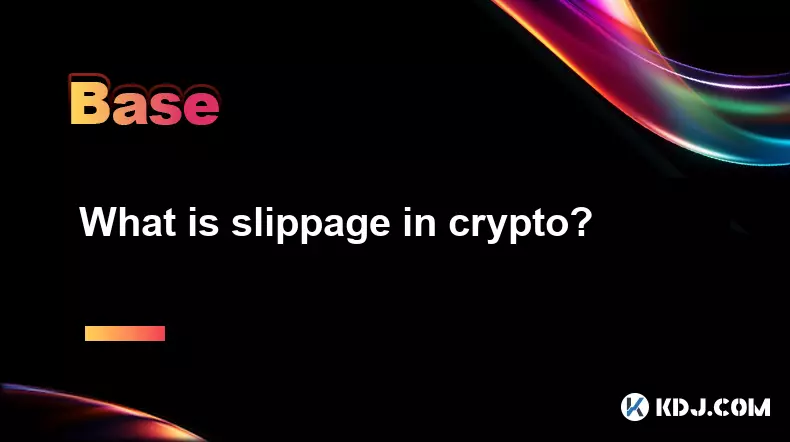
What is slippage in crypto?
Sep 08,2025 at 08:55pm
Understanding Slippage in Cryptocurrency Trading1. Slippage refers to the difference between the expected price of a trade and the actual price at whi...
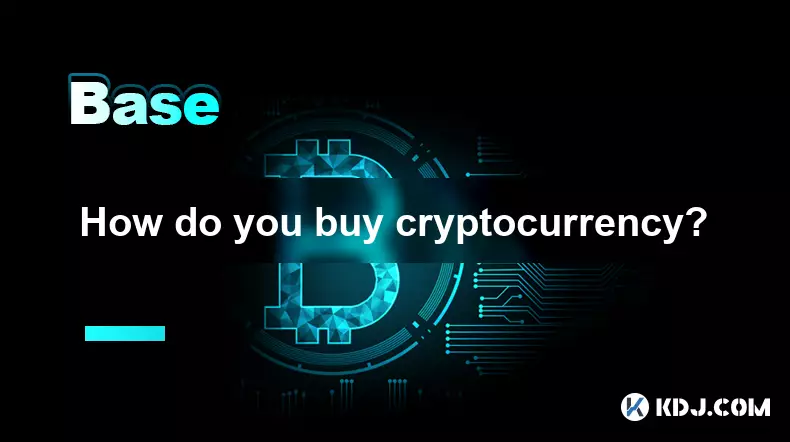
How do you buy cryptocurrency?
Sep 08,2025 at 07:54pm
Understanding the Basics of Cryptocurrency Purchases1. To buy cryptocurrency, you must first choose a reliable digital currency exchange. Platforms li...
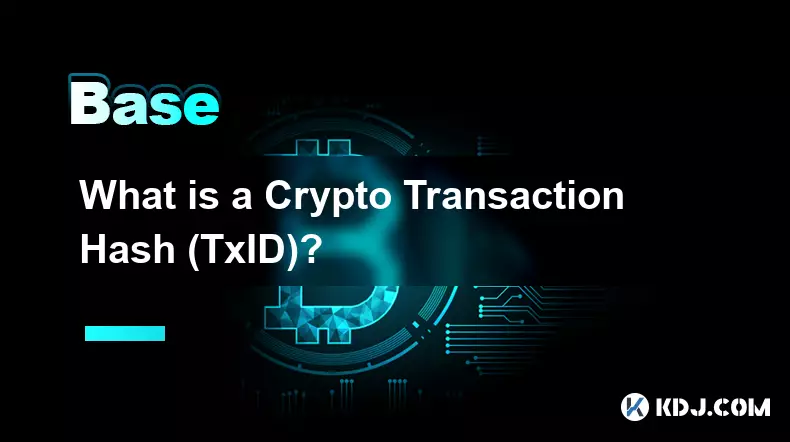
What is a Crypto Transaction Hash (TxID)?
Sep 07,2025 at 01:18pm
Understanding the Role of a Crypto Transaction Hash1. A crypto transaction hash, often referred to as TxID, is a unique identifier generated when a tr...

What is On-Chain and Off-Chain Data?
Sep 07,2025 at 04:55pm
Understanding On-Chain Data1. On-chain data refers to all information that is recorded directly on a blockchain. Every transaction, smart contract exe...
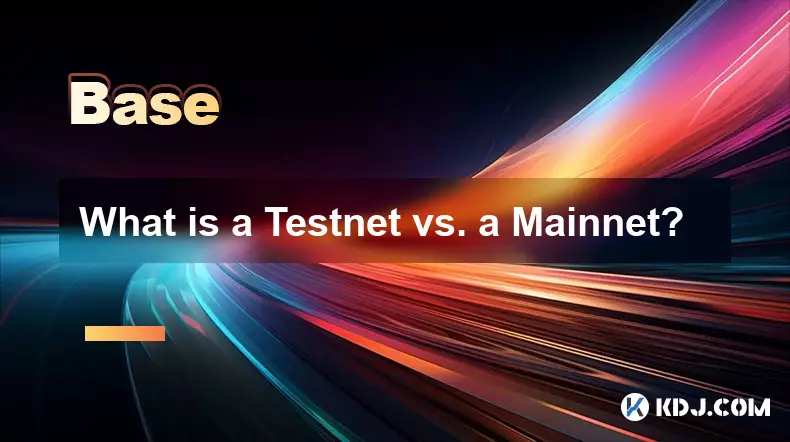
What is a Testnet vs. a Mainnet?
Sep 08,2025 at 05:55am
Understanding the Core Differences Between Testnet and Mainnet1. A Testnet is a parallel blockchain network used exclusively for testing purposes. Dev...

How to do Your Own Research (DYOR) in Crypto?
Sep 08,2025 at 08:00am
Understanding the Foundations of Crypto Projects1. Every cryptocurrency project starts with a foundational whitepaper. This document outlines the tech...

What is slippage in crypto?
Sep 08,2025 at 08:55pm
Understanding Slippage in Cryptocurrency Trading1. Slippage refers to the difference between the expected price of a trade and the actual price at whi...

How do you buy cryptocurrency?
Sep 08,2025 at 07:54pm
Understanding the Basics of Cryptocurrency Purchases1. To buy cryptocurrency, you must first choose a reliable digital currency exchange. Platforms li...

What is a Crypto Transaction Hash (TxID)?
Sep 07,2025 at 01:18pm
Understanding the Role of a Crypto Transaction Hash1. A crypto transaction hash, often referred to as TxID, is a unique identifier generated when a tr...

What is On-Chain and Off-Chain Data?
Sep 07,2025 at 04:55pm
Understanding On-Chain Data1. On-chain data refers to all information that is recorded directly on a blockchain. Every transaction, smart contract exe...

What is a Testnet vs. a Mainnet?
Sep 08,2025 at 05:55am
Understanding the Core Differences Between Testnet and Mainnet1. A Testnet is a parallel blockchain network used exclusively for testing purposes. Dev...

How to do Your Own Research (DYOR) in Crypto?
Sep 08,2025 at 08:00am
Understanding the Foundations of Crypto Projects1. Every cryptocurrency project starts with a foundational whitepaper. This document outlines the tech...
See all articles
























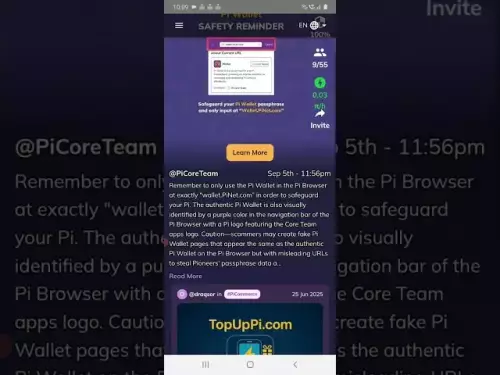
![[Pycoin] PI Coin -US President (Trump) Declaration ?? !! 'US' runs first. / Paikoin mining speed acceleration [Pycoin] PI Coin -US President (Trump) Declaration ?? !! 'US' runs first. / Paikoin mining speed acceleration](/uploads/2025/09/08/cryptocurrencies-news/videos/pycoin-pi-coin-president-trump-declaration-runs-paikoin-mining-speed-acceleration/68bed38c01e7a_image_500_375.webp)































































